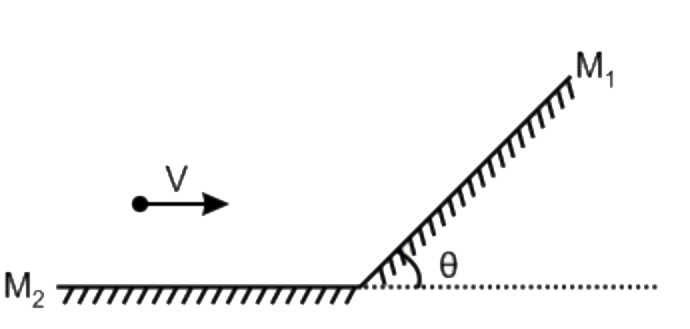A body is moving with uniform speed v in a horizontal circle in anti-clockwise direction as shown in figure. The motion starts from point A find the change in velocity in second quarter of revolution.a √2 v N-Wb √2 v N-Ec √2 v S-Wd √2 v S-E
The correct option is d √2 v S-E.Explanation:The diagram is clearly showing the change in velocity vector
Related Solutions
A body is moving with uniform speed v on a horizontal circle from A as shown in the figure. Change in velocity in the first quarter revolution is
View SolutionA body is moving with uniform speed v on a horizontal circle from A as shown in the figure. Change in velocity in the first quarter revolution is
View SolutionA body is moving with uniform speed v on a horizontal circle in anticlockwise direction from A as shown in figure. What is the change in velocity in (a) half revolution (b) first quarter revolution.
View SolutionA body initially at rest is moving with uniform acceleration a. Its velocity after n seconds is V. The displacement of the body in last 2 is
View SolutionA point moves along a circle with a velocity . Find the acceleration of the point at the moment when it has covered a quarter circle from the beginning of motion.
View SolutionA body starts from rest and moves for n seconds with uniform acceleration a, its velocity after n seconds is v. The displacement of the body in last 3 seconds is :
View SolutionA body initially at rest is moving with uniform acceleration a. Its velocity after n seconds is v. The displacement of the body in last 2 s is
View SolutionA body initially at rest is moving with uniform acceleration a .Its velocity after n seconds is v.The displacement of the body in last 2s is
View Solutionएक बिंदु वस्तु दो दर्पणों की व्यवस्था के सामने, चाल v से गतिमान है जैसा कि आकृति में दर्शाया गया है। यदि दर्पण में प्रतिबिंब का वेग दर्पण में प्रतिबिंब के सापेक्ष है तब n ज्ञात कीजिए।
 View Solution
View SolutionThe velocity v of a body moving along a straight line varies with time t as v=2t^(2)e^(-t) , where v is in m/s and t is in second. The acceleration of body is zero at t =
View SolutionThe velocity v of a body moving along a straight line varies with time t as v=2t^(2)e^(-t) , where v is in m/s and t is in second. The acceleration of body is zero at t =
View SolutionIf two bodies are in motion with velocity and :
View SolutionThe law of motion of a particle is , where .If v is the velocity and a the acceleration at time t, then
View SolutionA positively charged particle of charge q and mass m is suspended from a point by a string of length l. In the space a uniform horizontal electric field E exists . The particle is drawn aside so that it is projected horizontally with velocity v such that the particle starts to move along a circle with same constant speed v. Find the speed v.
View SolutionA positively charged particle of charge q and mass m is suspended from a point by a string of length l. In the space a uniform horizontal electric field E exists . The particle is drawn aside so that it is projected horizontally with velocity v such that the particle starts to move along a circle with same constant speed v. Find the speed v.
View SolutionA source of frequency n is moving with a uniform velocity v towards a stationary observer. If the velocity of sound is V, then the change in frequency would be -
View SolutionA body starts from rest at A and moves with uniform accelerationa in a straight line. T seconds after,a second body starts from A and moves with uniform velocity Kinthe same line. Prove that the second body will be ahead of the first for a time (2)/(a) sqrt(V (V - 2 aT))
View SolutionIf , prove that : .
View SolutionIf , prove that
View SolutionA particle is moving in a circle of radius r with speed v as shown in the figure. The magnitude of change in velocity in moving from P to Q is
View Solution
